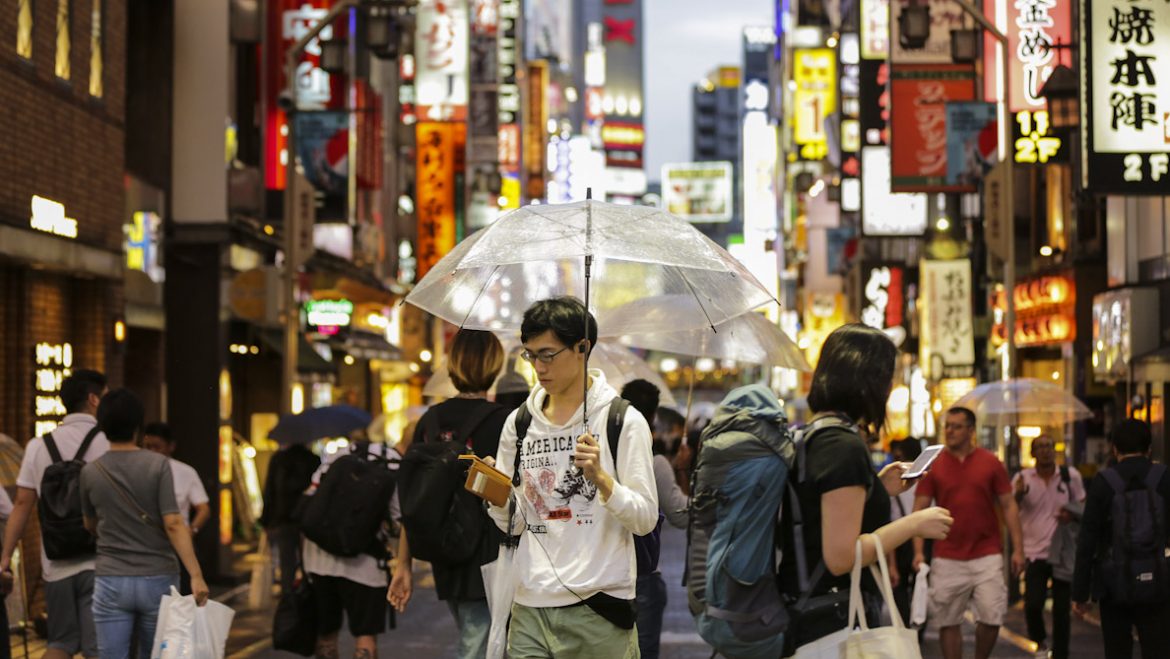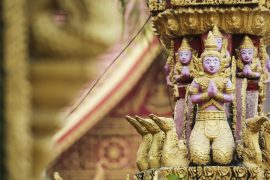Tokyo has been the capital of Japan since 1869, when Emperor Meiji moved his seat to the city. Before that, Kyoto used to be the capital and Tokyo was known as Edo. With over 13 million inhabitants, Tokyo is not exactly a deserted metropolis. It is a busy city, full of people and full of life. We visited some of the busiest neighbourhoods (Shinjuku, Shibuya, Akihabara, Harajuku, Asakusa, Ryogoku) and tell you what to do in Tokyo and what to see in each of the neighbourhoods.
Shinjuku neighbourhood
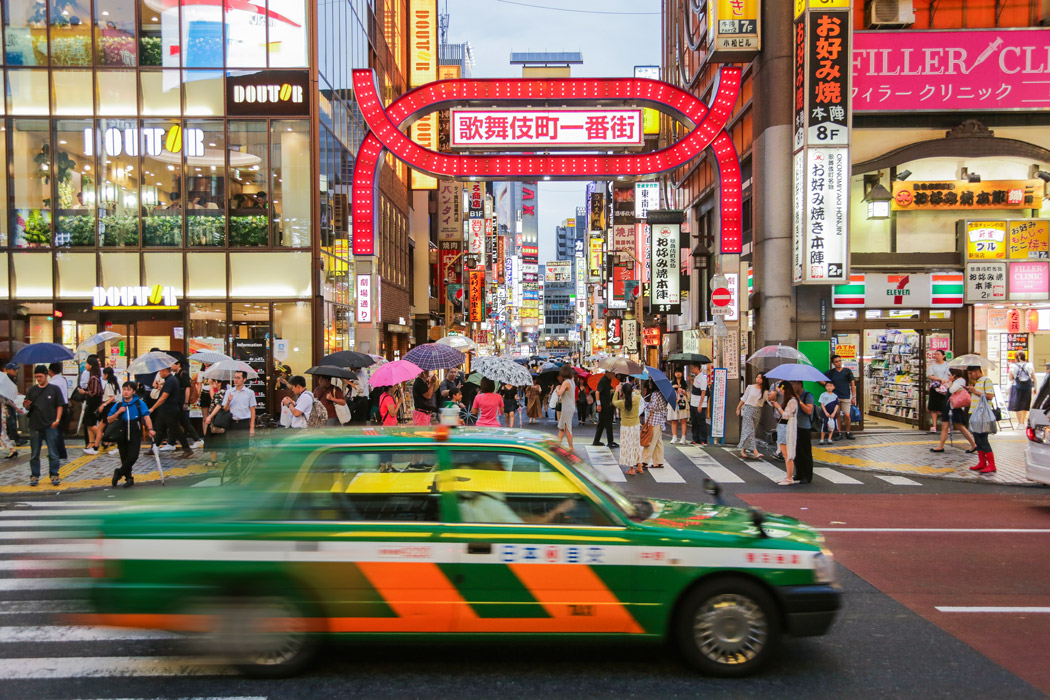
For us, Shinjuku reflects the spirit of life in Tokyo. Its station is the busiest in Tokyo and a stroll in the neighbourhood will never be a quiet stroll. We loved to come to this neighbourhood for dinner, for a rally to the bars in the Golden Gai, for a first experience in one of the many karaoke bars or to peek inside the busy pachinko parlours.
On the Eastern side of Shinjuku lays the Yasukuni-dori Street, its main axis. From here, smaller perpendicular alleys are filled with life. The gaudy gate of Kabukicho opens to a dazzling area. It is mind-blowing: a giant dinosaur stands out of a cinema building roof; cabarets feature girls wearing school uniforms, these lolitas stand outside inviting the lonely Japanese men inside the showrooms; pachinko parlours promise fortunes and of course, there are also hundreds of places offering food and drinks. We kept an eye on the flashing neon lights and on the peculiar cat cafés and maid cafés. There was so much going on, on either side of the road that our necks hurt after a while. What a lively place this is!
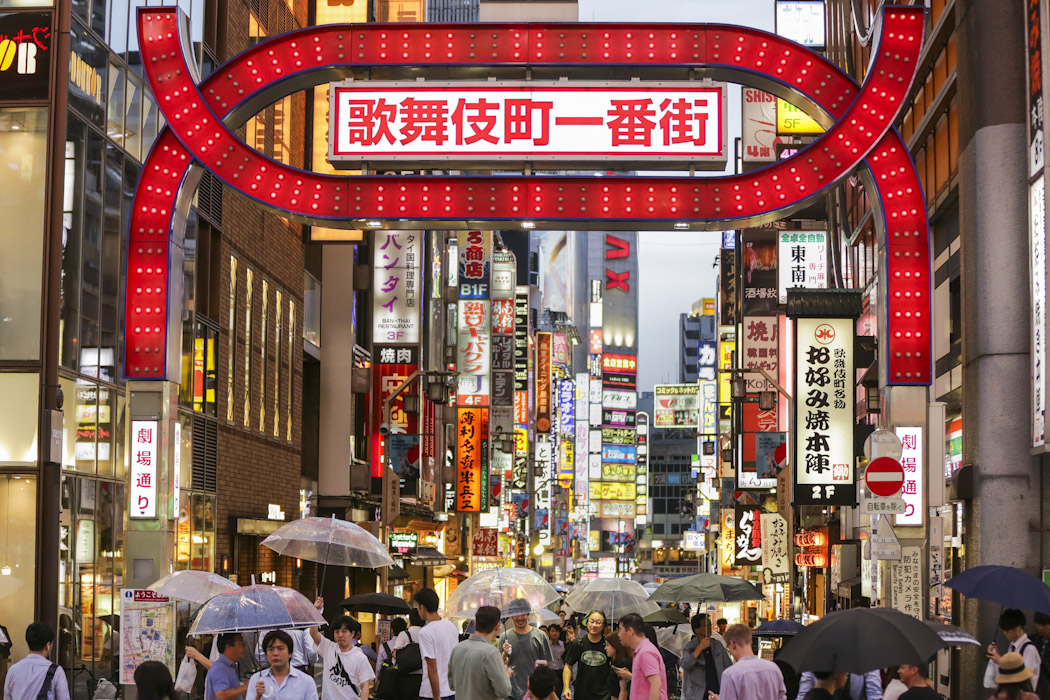
A special feel in the Golden Gai, where Japanese meet in izakaya pubs after work. The Golden Gai is a compound of six, unpolished alleys that shelter over two hundred bars, in the remains of an old Tokyo that is quickly disappearing. Some of the bars are so small that they can only welcome four customers at a time, and they usually charge a cover fee, or demand a minimum of drinks per person. Other bars will not even accept foreigners or random customers; they prefer to keep their limited seats for regulars, who will stay the entire night. In any other city, these six old alleys, which are run-down, shabby and poorly lit – when compared to other neighbourhoods – would make one vigilant. Not in Japan; it is totally safe to wander alone in these alleys.
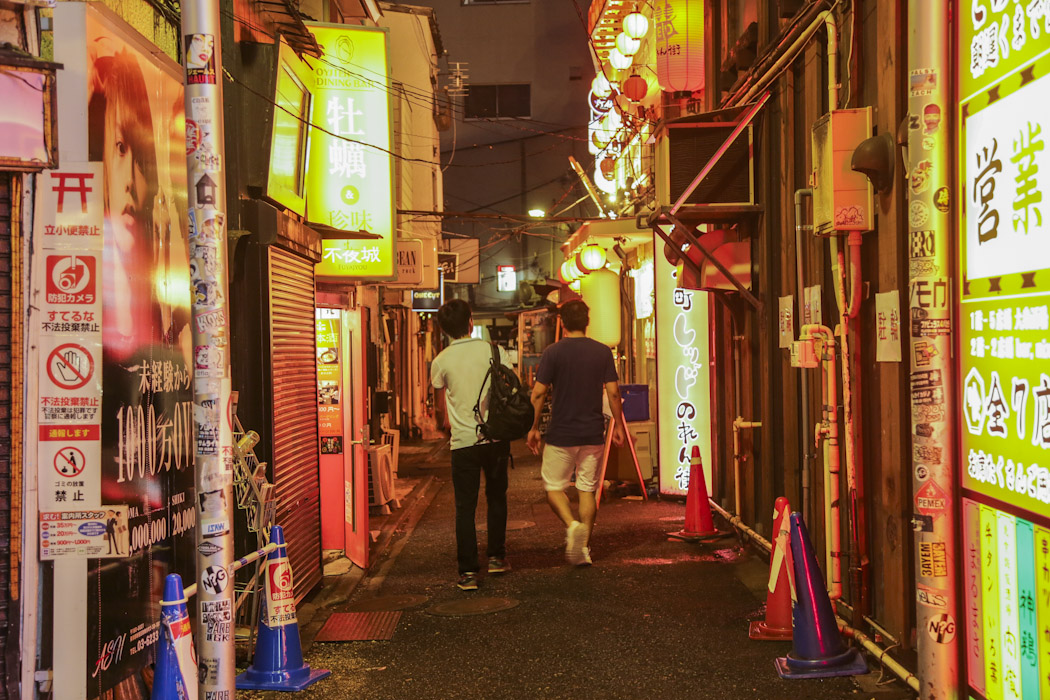
On the western side of Shinjuku, there is Nishi-Shinjuku, the sky-scraper business centre. A central piece of the district is the Tokyo Metropolitan Government building that hosts the Tokyo government. This building is easily recognisable by its two imposing towers draw to resemble a cathedral. The highest tower is 48 stories tall. The public is welcome on the observatory deck on the 45th floor.
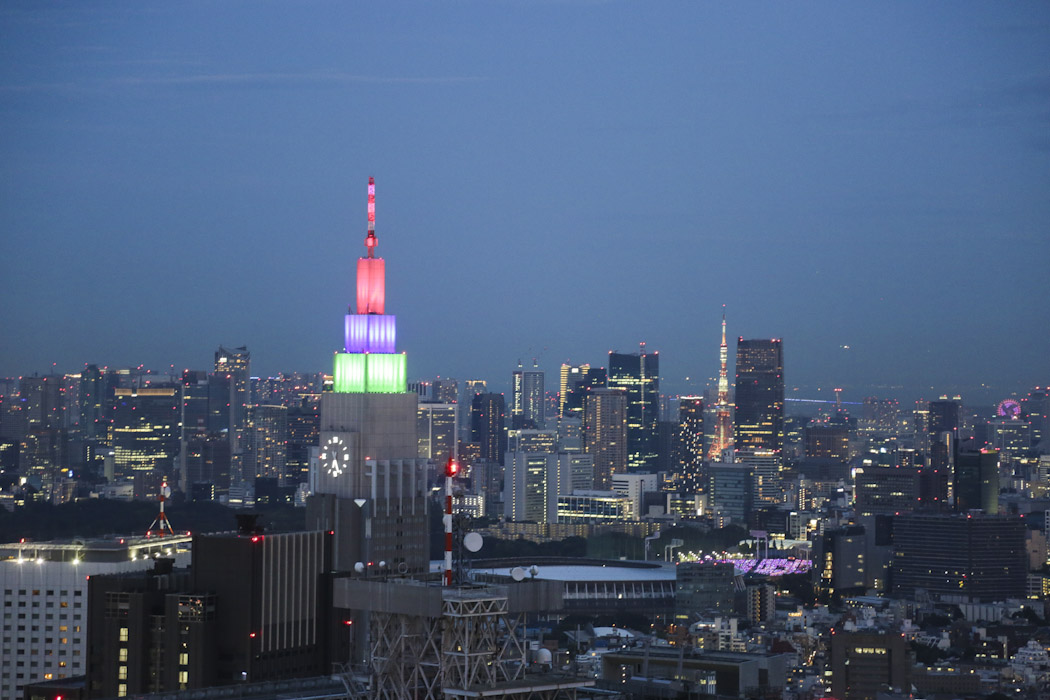
The views from here are amazing, especially if the weather is clear and Mount Fuji is seen in the background of the city. We didn’t get to see it, but it is worth to come here for the free views of the city. There are so many skyscrapers, and they are the working place of thousands of people. Good that we went in the late afternoon and were able to see the night falling over the city.
Shibuya neighbourhood
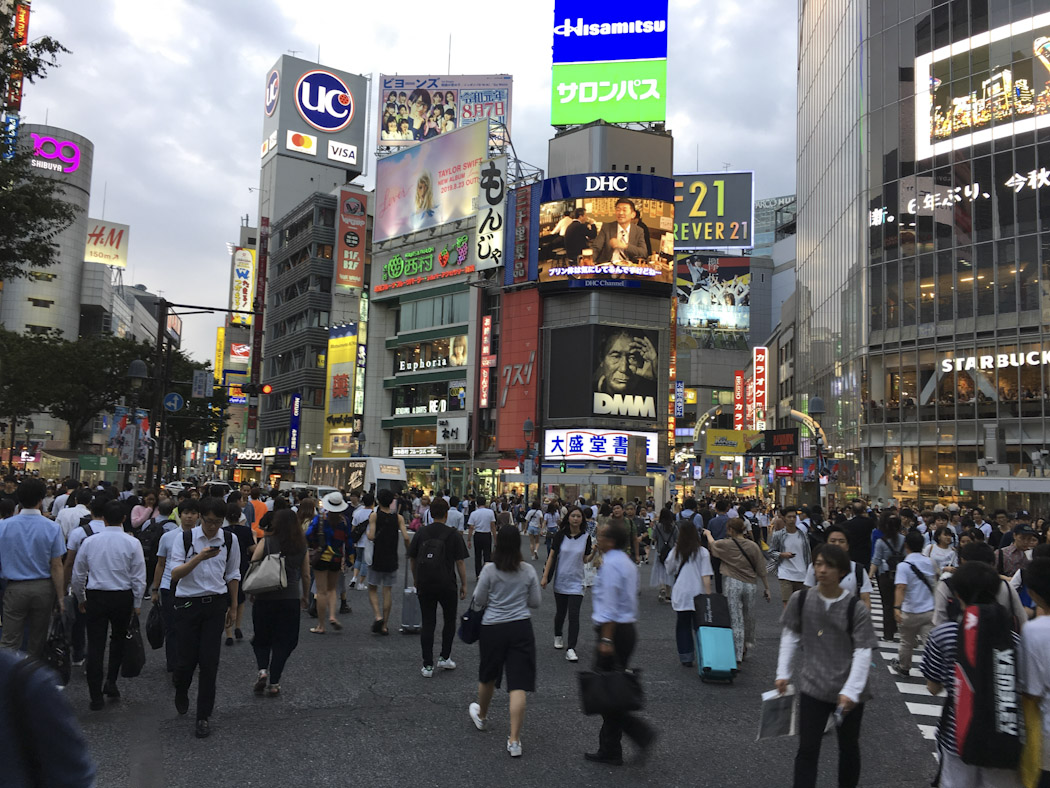
This is probably the densest neighbourhood of Tokyo, with an estimated population of 221,801 spread in the tiny area of fifteen square kilometres. It is the heart of the city, beating faster than any other place in Tokyo. The square immediately next to the station is world-famous because of the number of people, thousands of pedestrians commuting daily from the station into the centre of Shibuya. It is here that we find the world-famous Shibuya crossing, the biggest and busiest pedestrian crossing in the world, where more than 2,000 people can cross at a time. Commuters, as well as residents, prefer to use the effective network of subways, buses and trains that makes all the necessary connections within and outside the city.
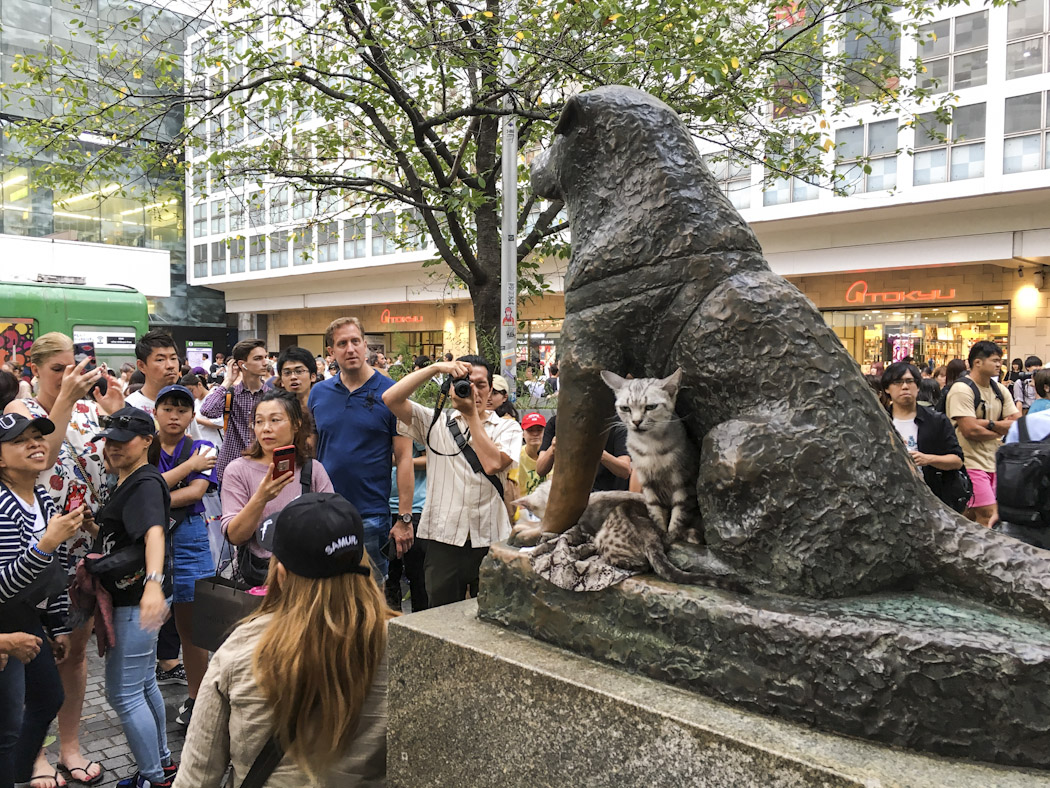
It is also next to the main access to the station that we find another landmark of Shibuya. It is the statue dedicated to Hachiko, a very special dog. Hachiko, a Japanese Akita breed, is still remembered today as the loyal dog who continued to come to the station waiting for his owner for several years after the owner’s death. The day we came here, someone had brought his own cat with kittens and had them there, next to Hachiko’s statue. We didn’t understand the reason why, as he was not asking for any money to the thousands who posed with Hachiko and the kittens.
As a visitor, it is impossible to follow the crowds crossing Shibuya crossing. We had to stop and take the time to absorb this mass show. The spectacle is not only about the people walking the scramble crossing, with its five pedestrian crossings, sending people in all directions, including the less obvious diagonal. The set in which all this happens is also spectacular. The buildings around the square are covered in giant screens advertising with flashing neon lights.
Facts of Japan
The Japanese do not greet each other with handshakes; instead bowing is expected as a sign of respect. This gesture already figured in the manuals about warrior etiquette that samurais had to learn. The bowing then spread to the common people.We can’t decide if the best is to experience the crossing from the ground, mingling with the people, or from above, from the Starbucks café, the Shibuya Excel hotel or from the train station, where we get birds-eye views of the street life. The neighbourhood is also a place to go shopping, to search for the last fashion, to dine or to sleep in one of the eccentric love hotels.
Akihabara neighbourhood
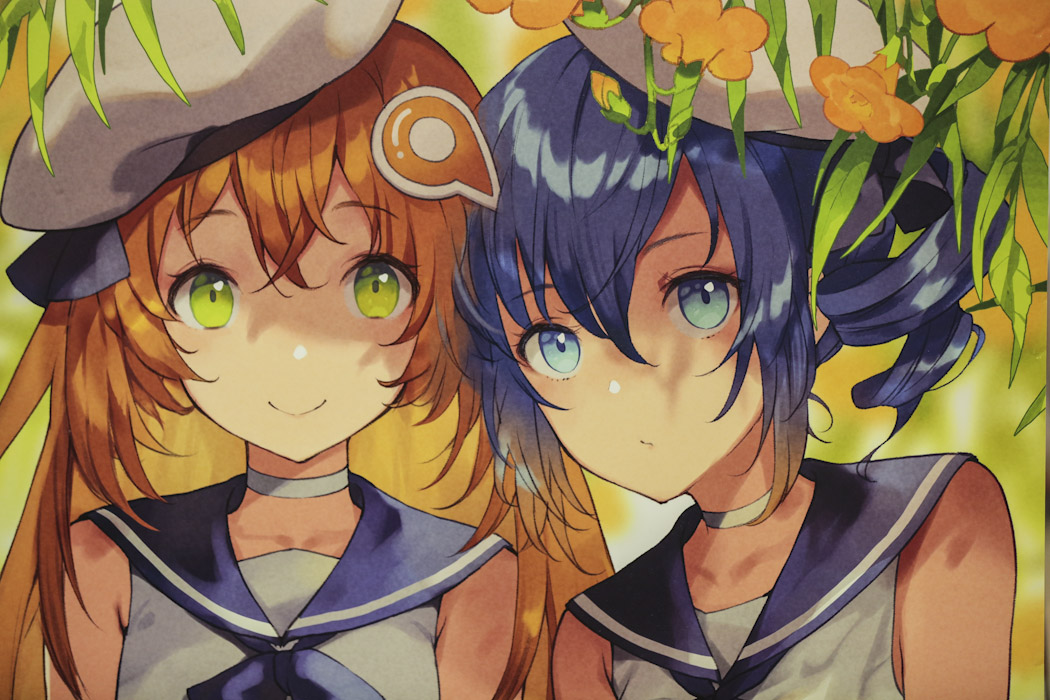
Akihabara is also known as Electric Town. This neighbourhood is home to the otaku sub-culture. A sub-culture that identifies with those that have a special interest in manga and anime. It is here in Akihabara that we find entire buildings dedicated to the sale of products that interest the otaku youngsters (and the less young).
Facts of Japan
Manga are Japanese comic books, hand-drawn by mangakas. Over two billion manga are sold in Japan each year and it is popularly believed that more paper is used to print manga than to make toilet paper.We entered the Akihabara Radio Kaikan building and were dumbfounded by the kind and the number of available products. Each floor having its own thematic. On one floor only manga literature, on another anime videos. And the succession of floors brought with it a vast array of new products: dolls, collection cards, dinosaurs, video games, etc.
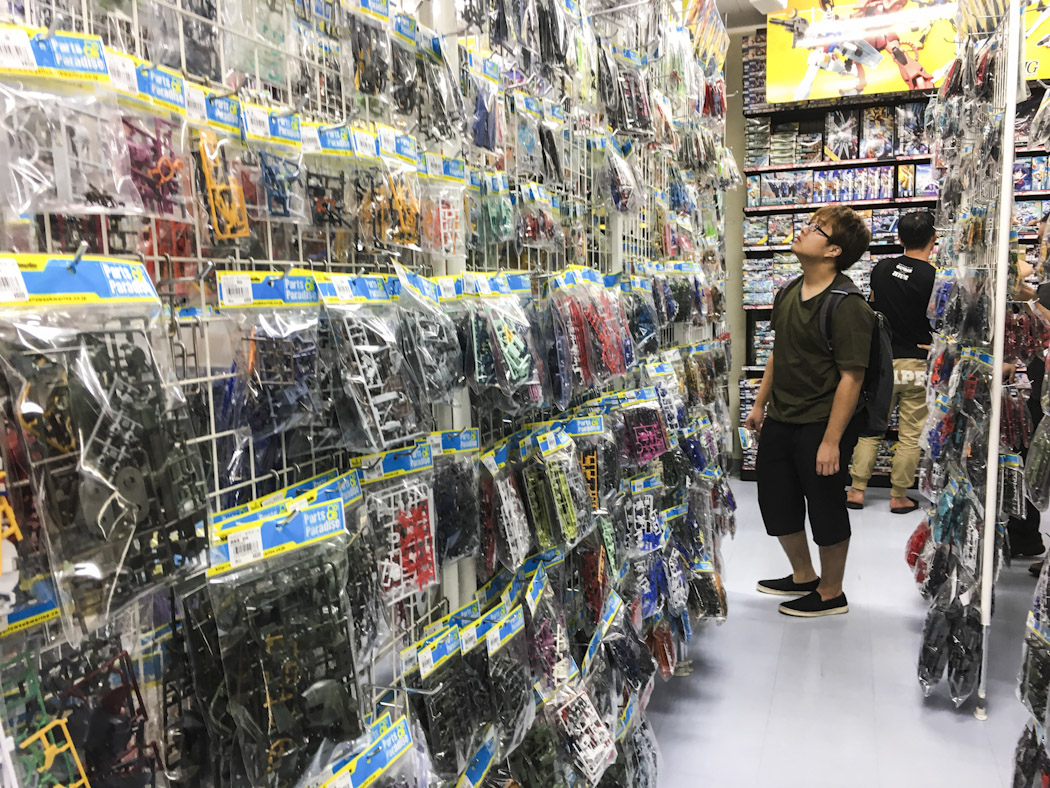
It is also in this neighbourhoods that one finds several maid cafés. These are cosplay cafés, where the guests are served by girls dressed as ‘cute’ French maids. Once inside, the girls welcome you with a lot of giggling and many theatrical poses, which can include treating you as ‘master’. The café offers set menus with drinks, cakes and photos (usually limited to one or two). When you are served, there will be all the same ‘tee-hee-hee’ again, with the maidens teaching you how to sing in Japanese, to the silliest choreographies that include making too many hand-shaped hearts and more ‘cute’ poses. Their targets on the streets are not foreigners, but Japanese young men, which, we felt, were regular clientele.
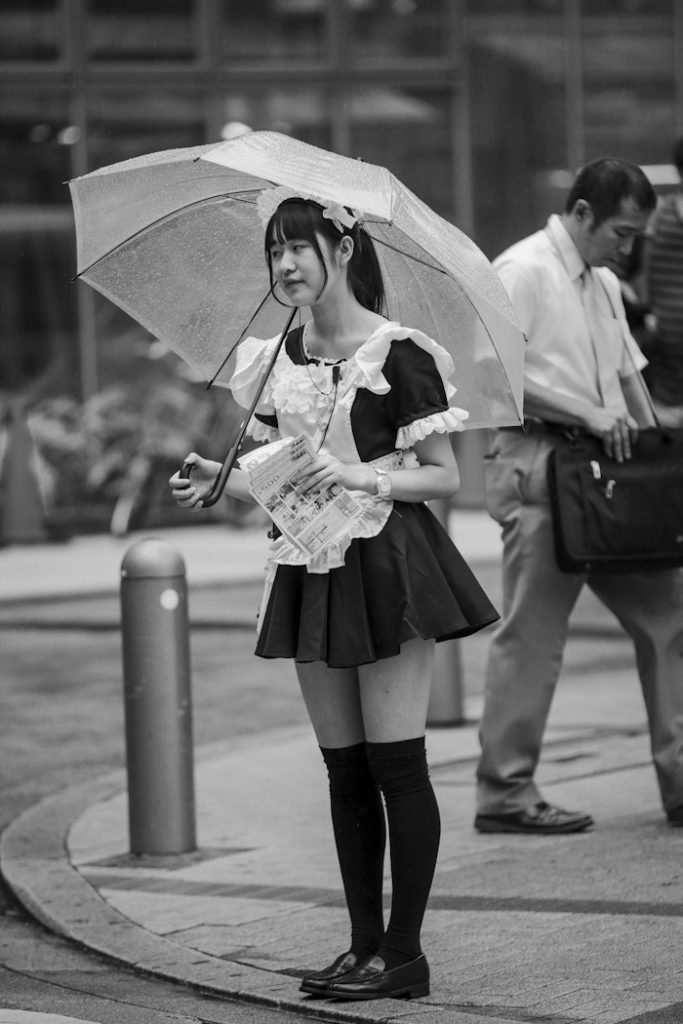
Whether this is funny or tasteless is up to one’s own opinion. While the maid cafés were for us tolerable, less acceptable were some of the porno manga we saw in some manga‘s sections. We have no problem with erotic literature or cartoons, except if the porno is beyond the reasonable and enters the queer (and sick) world of pedophilia.
Harajuku neighbourhood
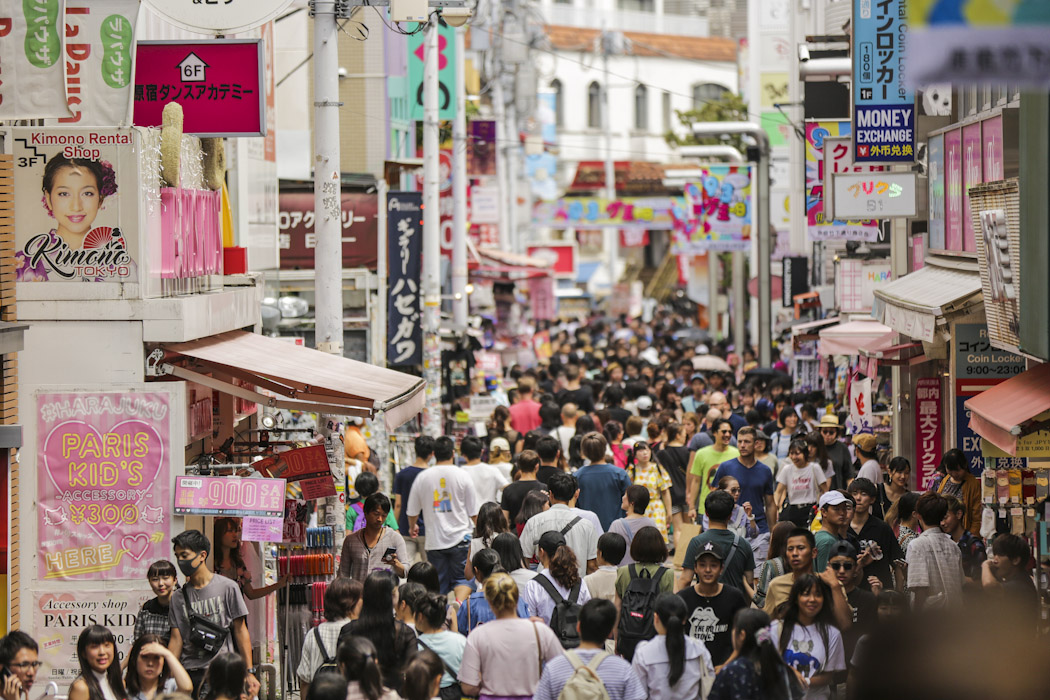
We headed to Harajuku for another feel of fashion and kawai culture. Kawai is another subculture that favours the cult of the ‘cuteness’. Takeshita street is a good place to find many ‘lolitas’ on their way to shop their pink and lace accessories. Gothic lolitas are also in fashion, so be ready to spot girls with black make-up, black lace and black nails!
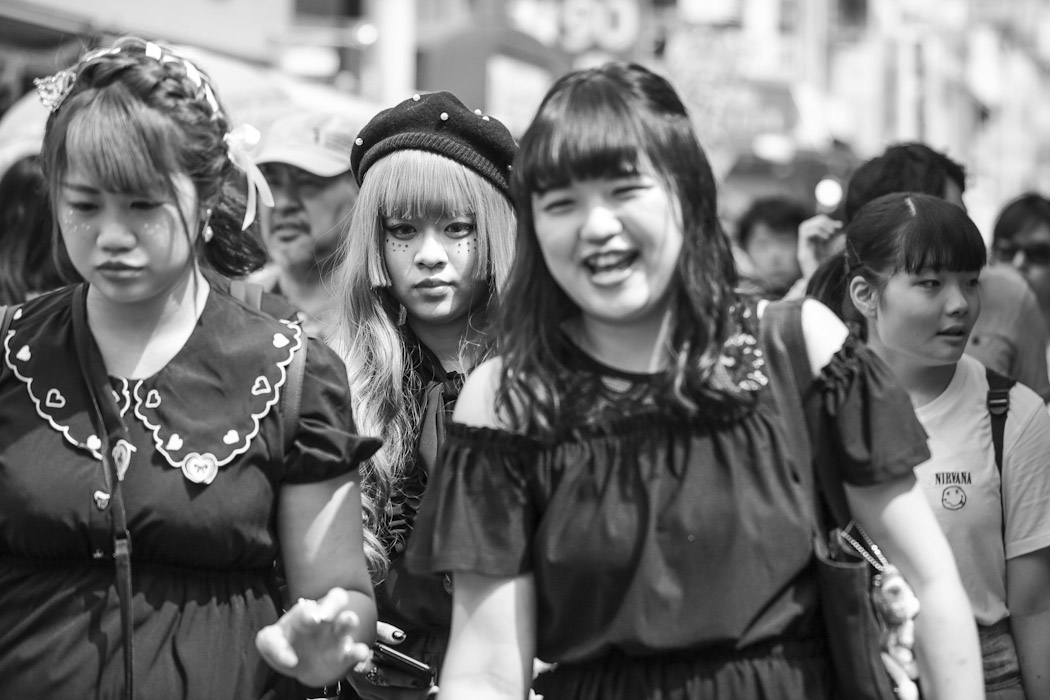
On our way there we made a long break at the Meiji shrine, especially because of its spectacular location in a forest that covers an area of 70 hectares, next to the no less beautiful and green Yoyogi park. This shrine is dedicated to Emperor Meiji and his wife. Its construction was started after the emperor’s death in 1912. Today it is an elected place for the Japanese to have a green and quiet rest on weekends and holidays.
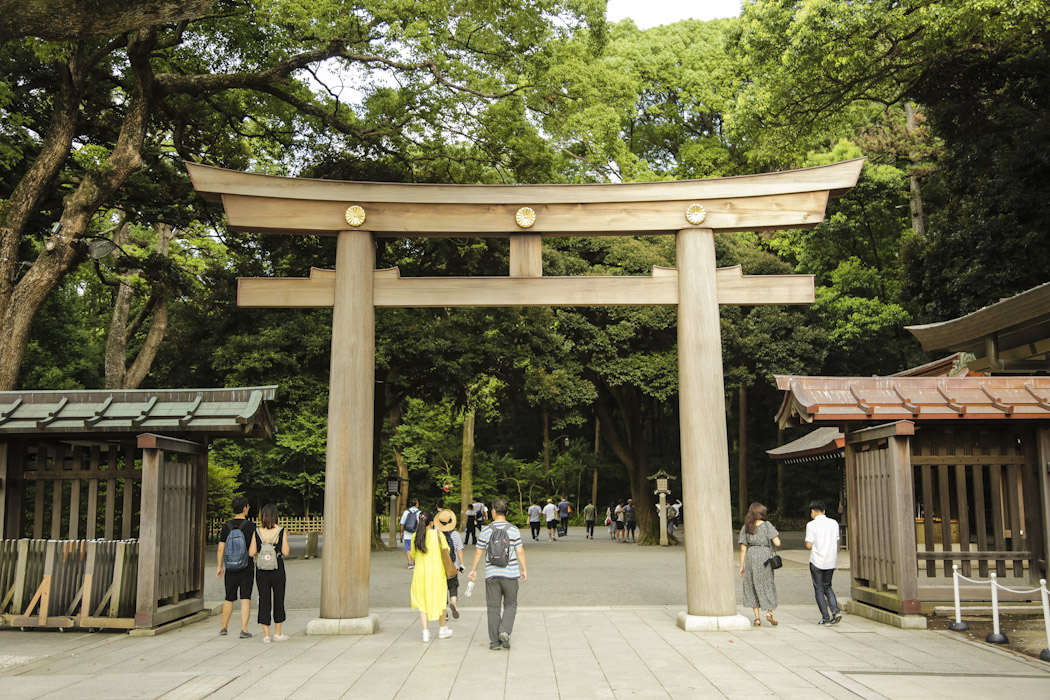
When we visited Tokyo, in August, we were lucky to attend the Yosakoi Dance festival, which includes a lot of groups dancing and parading in the Omotesando street. The dances are energetic and combine traditional Japanese dance movements with modern music. The attires used by the dancers is also a mix of modern and traditional.
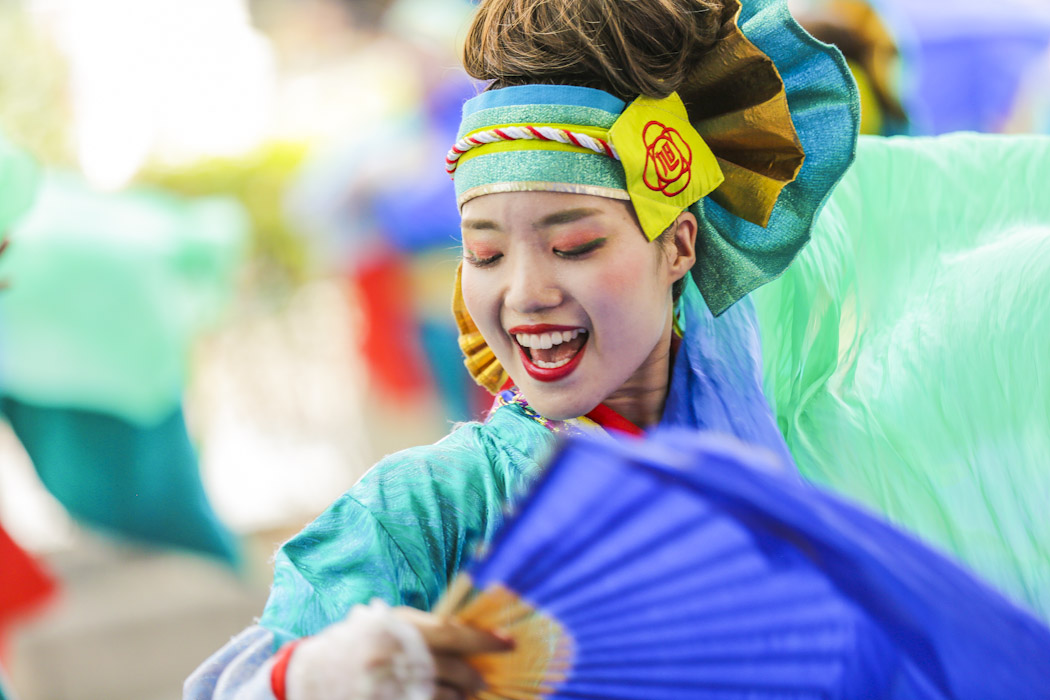
Omotesando street has got a bunch of fancy shops and here we find represented the most exquisite international brands. Some are located in striking buildings from the point of view of architecture. The Tod’s building, for example, was built by Pritzker winner Toyo Ito.
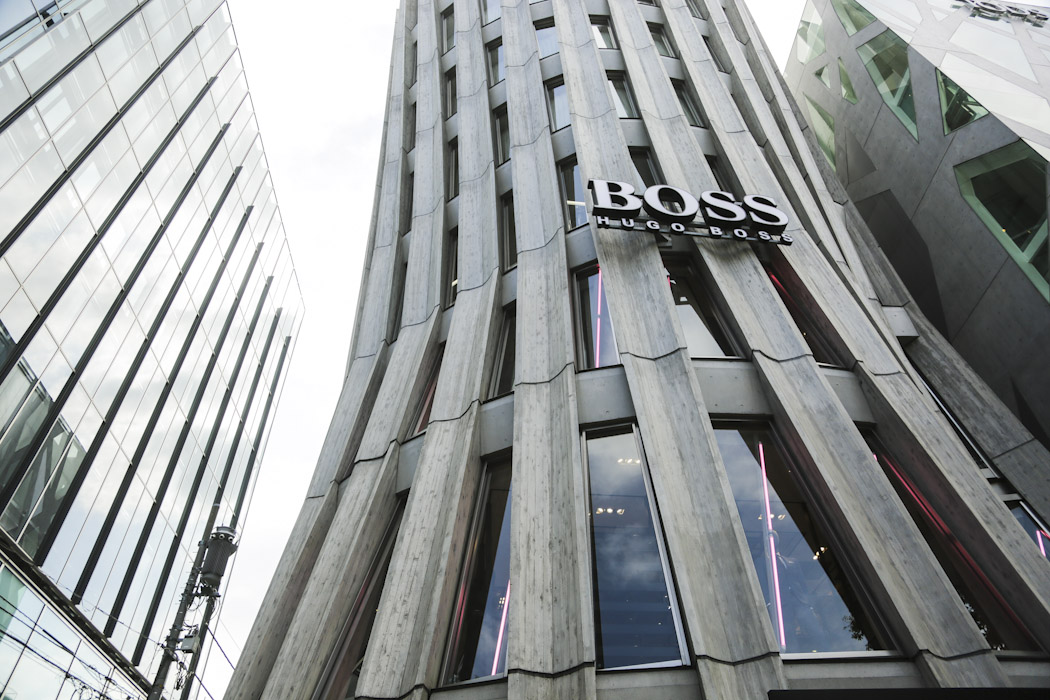
The Omotesando street itself is a long tree-lined avenue. The trees along the avenue are the zelkova, a native species of Japan. The shops here are all high-end brands. So if your shopping list includes names such as Louis Vuitton, Tod’s, Dior or Gucci, this is your street.
Asakusa neighbourhood
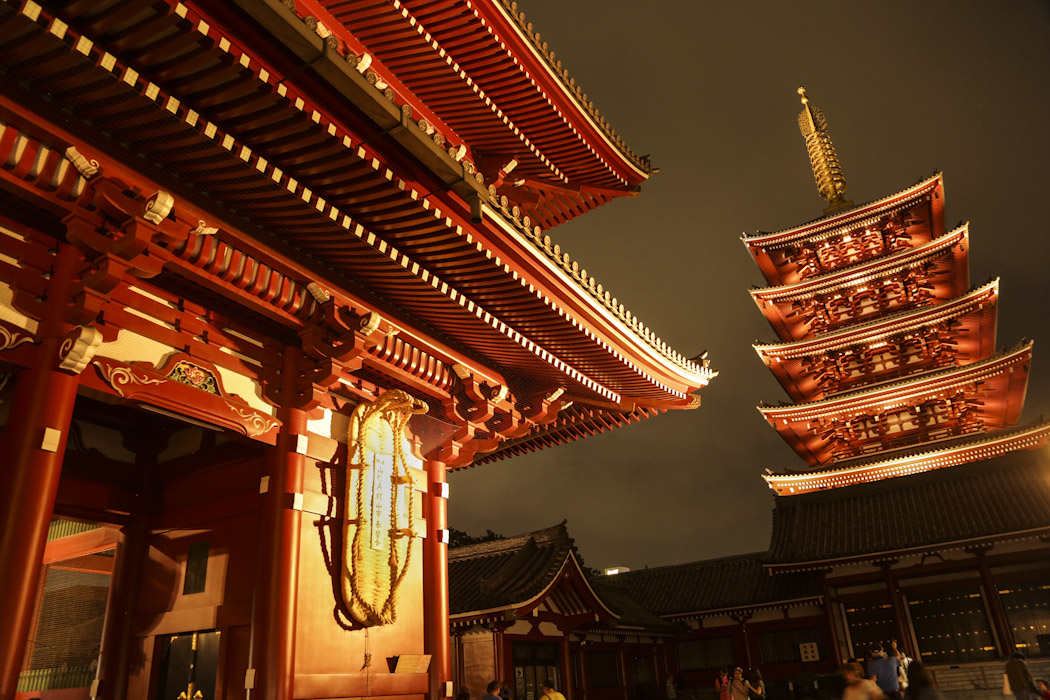
Our highlight of Asakusa was the Senjo-ji Buddhist temple. Next to it is the beautiful five-story pagoda and the Asakusa Shinto shrine. The ambiance in the evening was delightful, with many Japanese coming here to make their prayers but also to buy O-mikujis. O-mikujis are random fortunes written on strips of paper. If the fortune is satisfying, the believer keeps the paper, if the fortune is dissatisfying, the person leaves the paper at the temple and hopes to get better luck next time.
Ryogoku neighbourhood
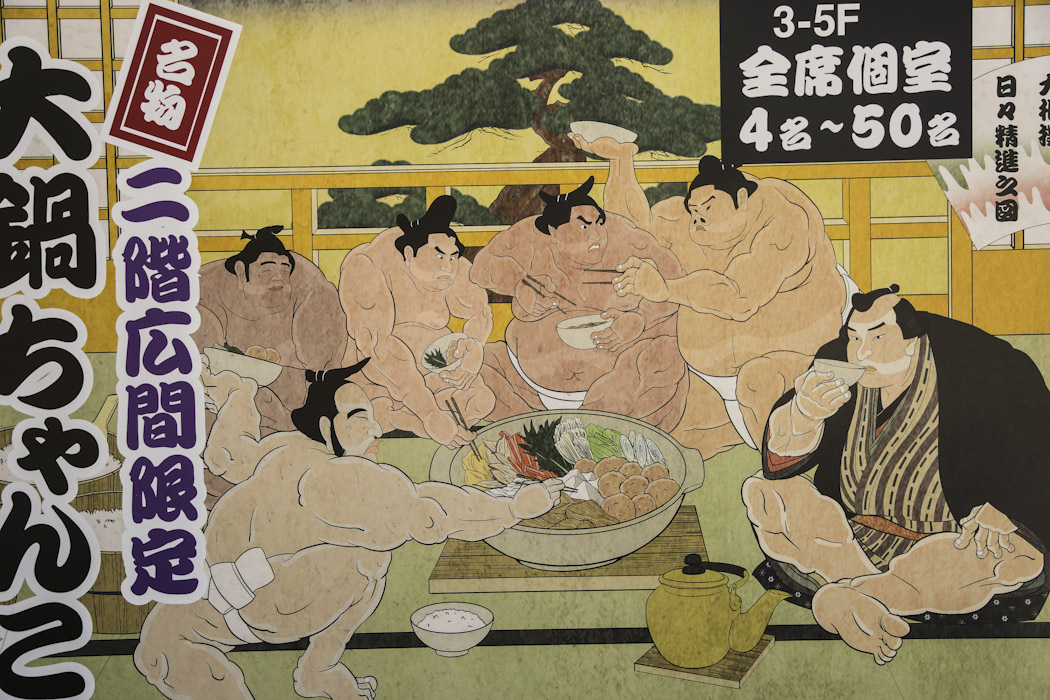
We wanted to attend a sumo match (the national sport in Japan), but our stay in Japan did not coincide with the season for sumo tournaments. As it was, we had to content ourselves with watching the rikishi (that’s how sumo wrestlers are called) during their daily practice. For that, we headed to Tokyo’s Ryogoku district, where there’s no shortage of training stables.
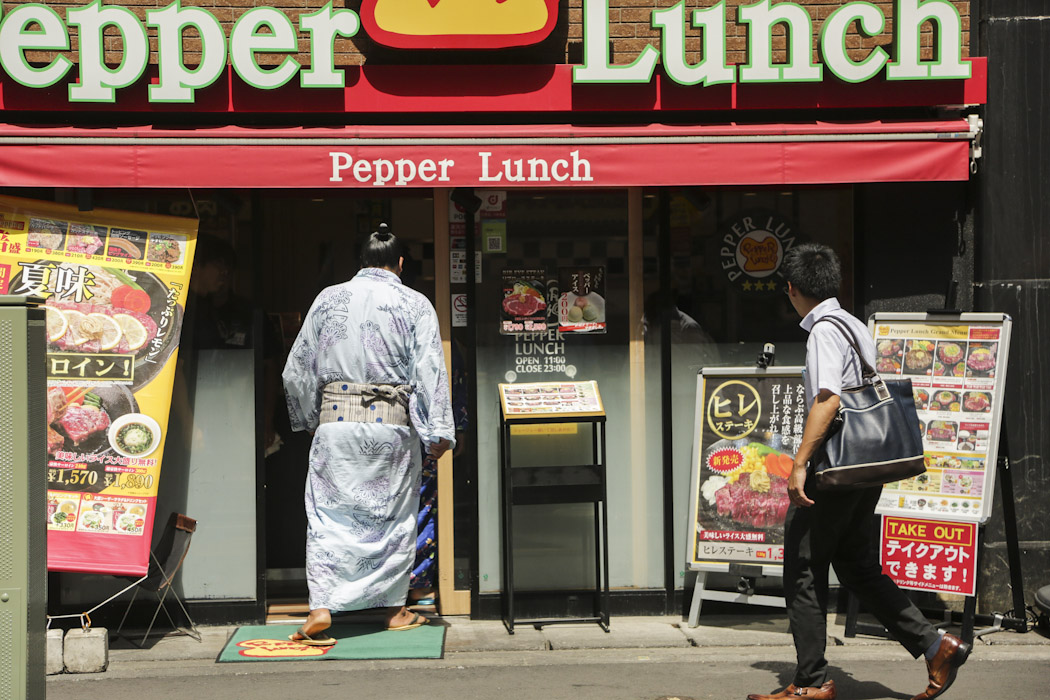
Stroll through the Ryogoku district, and you risk bumping into dozens of sumos. They are all easily recognisable by their hair and outfits. When they enter a stable, sumos are obliged to grow their hair and wear it in a bun (or a chonmage, similar to the ones worn by samurais) and to dress in the traditional yukata (Japanese attire) when in public.
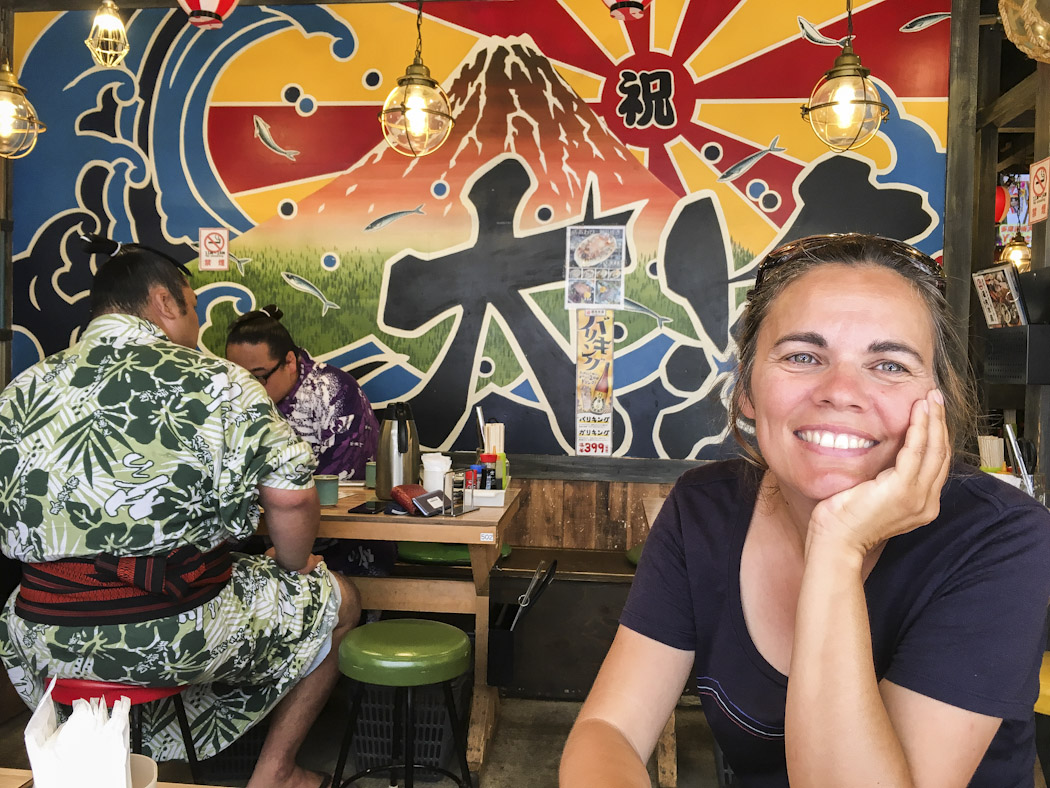
If part of the sumos’ force comes from their training, the other part comes from their weight. The stable controls what the wrestlers eat; making sure their diet and lifestyle will lead to the inevitable weight gain. No breakfast before practice is followed by a monumental meal and the successive siesta does the trick. Chanko nabe is their favourite meal, and you can find it in all the small restaurants in Ryogoku. It is a hotpot of noodles, meat and vegetables, served in XXL portions.
Bunkyo neighbourhood
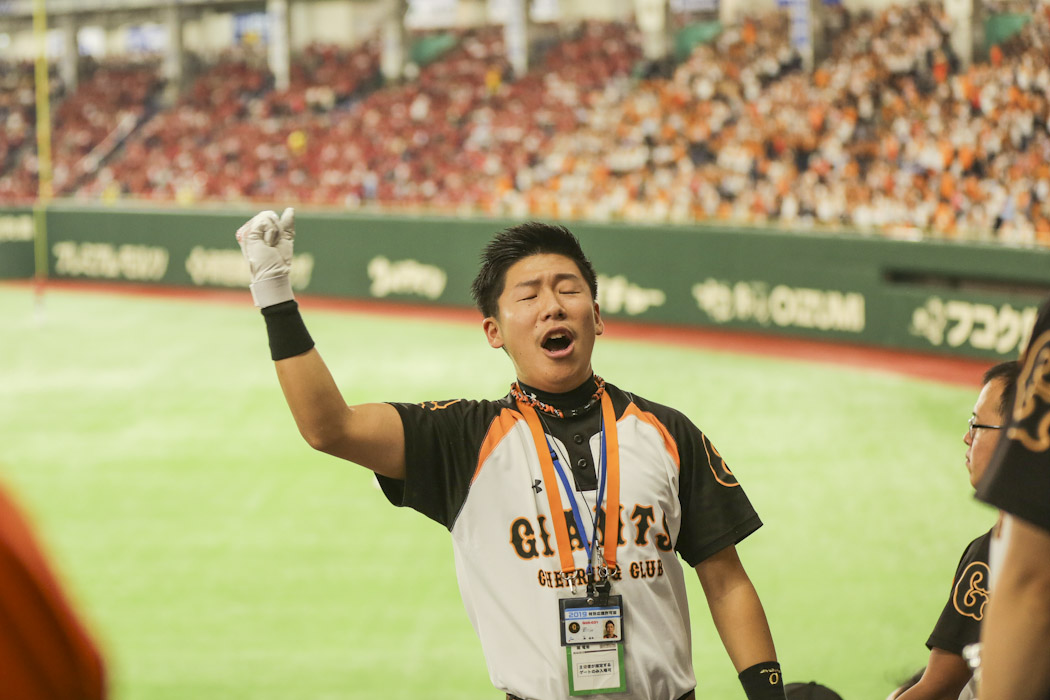
We were strolling through Bunkyo when we came across the Tokyo Dome, by chance. It was also a chance that there was a lot of animation around the dome. As it happens, a baseball match was about to happen. And again luck was on our side, as there were a few tickets available to attend the match in the ‘standing places’.
Tokyo Dome is used for many other purposes besides baseball games (it is the home stadium of the Yomiuri Giants), it can accommodate 55,000 people, therefore, it is also used as a concert hall.
Interested in Japan? Check the following articles:
- 44 Reasons Why we Visited Japan and Why you Should too
- Do you Know what is Forest Bathing in Japan
- A Day at the Hiroshima Memorial in Hiroshima
- Curious about the Secret Life of a Japanese Buddhist Monk?


